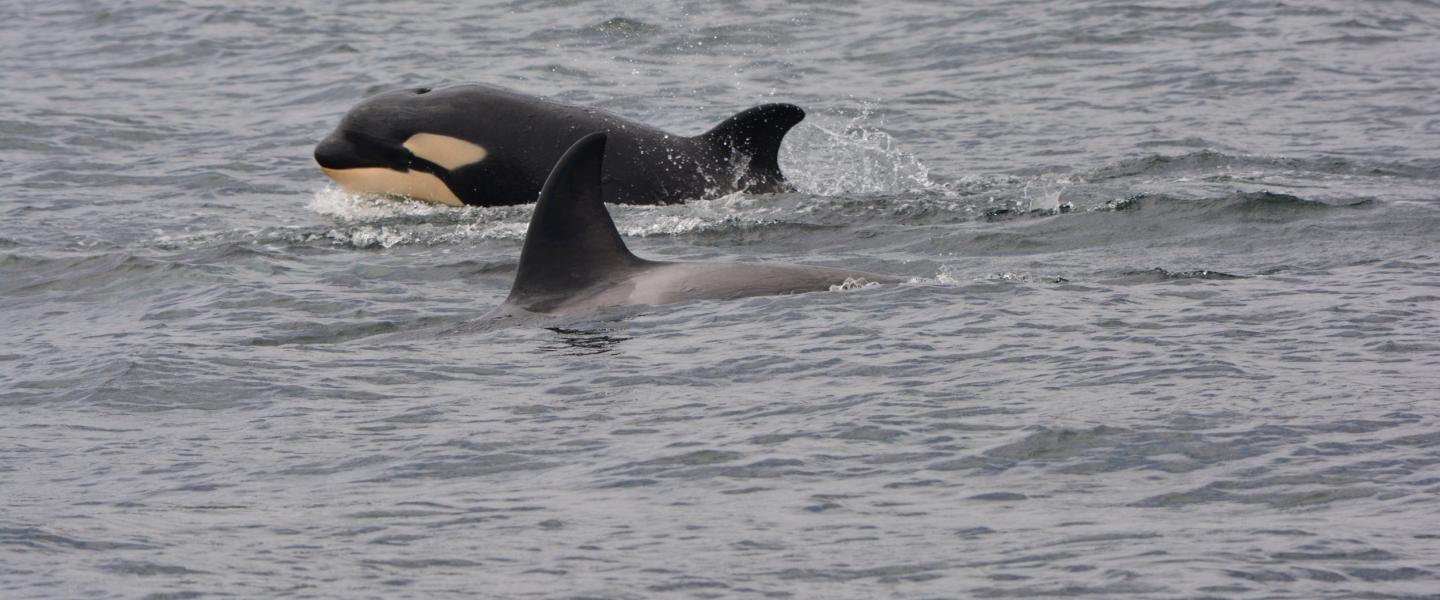
Lauren Fritz, M/V Sea Lion, 07/13/2017, 1:30 pm and 5:30 pm Tour
Today was an incredible day on the water. M/V Sea Lion ran two tours out of Friday Harbor today, each with some spectacular sea and weather conditions and some great sightings of killer whales, harbor seals, bald eagles galore, and an exploration of some unique aspects of our marine ecosystem out here in the Salish Sea - like our amazing bull kelp forests and nutrient-dense waters. I've compiled and editted some of my favorite photos from the trips, so please take a look through and enjoy!
The killer whales we encountered out in Rosario Strait were identified as the T37's, T34's, T34B's, and a huge lone male T51. He has a tell tale nick near the top of his dorsal fin - see if you can spot it in the photos below. My favorite part of the encounter? Seeing a two month old orca calf cruising through the water with his family! What an absolute cutie. This is believed to be T34B, the second calf of T34. He had the telltale creamy yellow-brown patches that are characteristic of orca calves. He impressed me with his speed today - he was certainly able to keep up with the quick pace of his mom and the rest of his family. They wouldn't have left him behind, of course, but it was exciting to see him swimming so quickly! All of us on board the Sea Lion were positively smitten.
This brings up a perfect chance to mention some of the reproductive characteristics of killer whales. Unlike some of the larger baleen whales, orcas do not follow certain breeding seasons. Females can be ready for mating at multiple times throughout the year, so there is no regular pattern in terms of what time of year they get pregnant or when calves are born. Some say they are most commonly born in the winter, but regardless, it could happen any time of the year. The gestation period last around 16 months, and as part of their matriarchal society, the offspring stay with their moms for life - no separating after they're fully mature! Females will continue to reproduce from the time they are about 14-15 years old until they reach menopause, usually sometime around the age of 40. This means they usually have about 4 - 6 successful offpsring throughout their life.
Remember that these are just averages based on lots of observations. There's always exceptions to these non-rules! Whale-watching out here in the San Juan Islands is always exciting; we are able to see and watch the families as they grow. We'd love for you to join us if you haven't had the chance yet - there's nothing like seeing this area, alive and teeming with all sorts of wildlife.
Enjoy the photos, and thanks to those of us who joined us on either of our tours today. Until next time, take care and remember to keep living green!
Lauren Fritz, Naturalist, San Juan Safaris